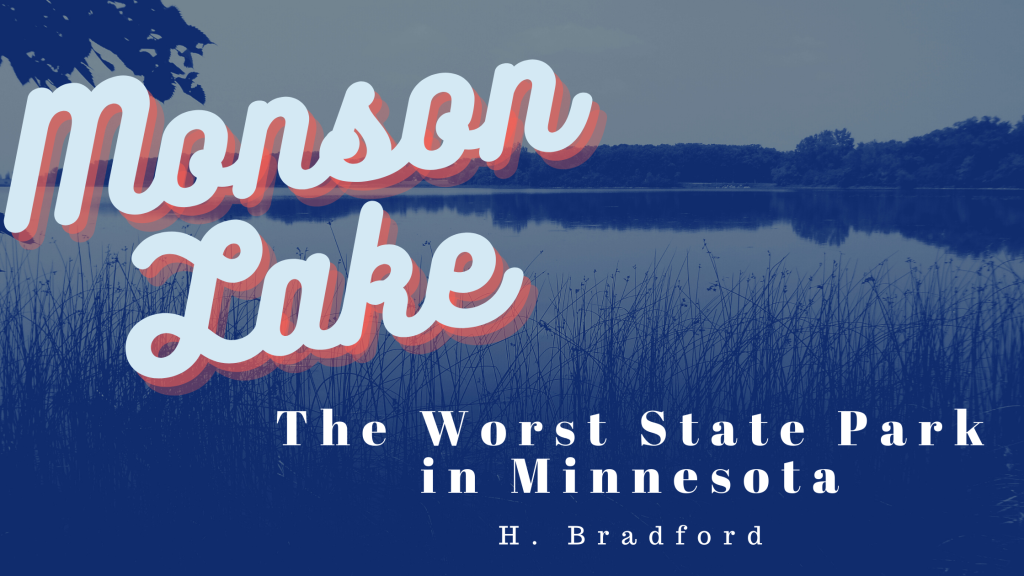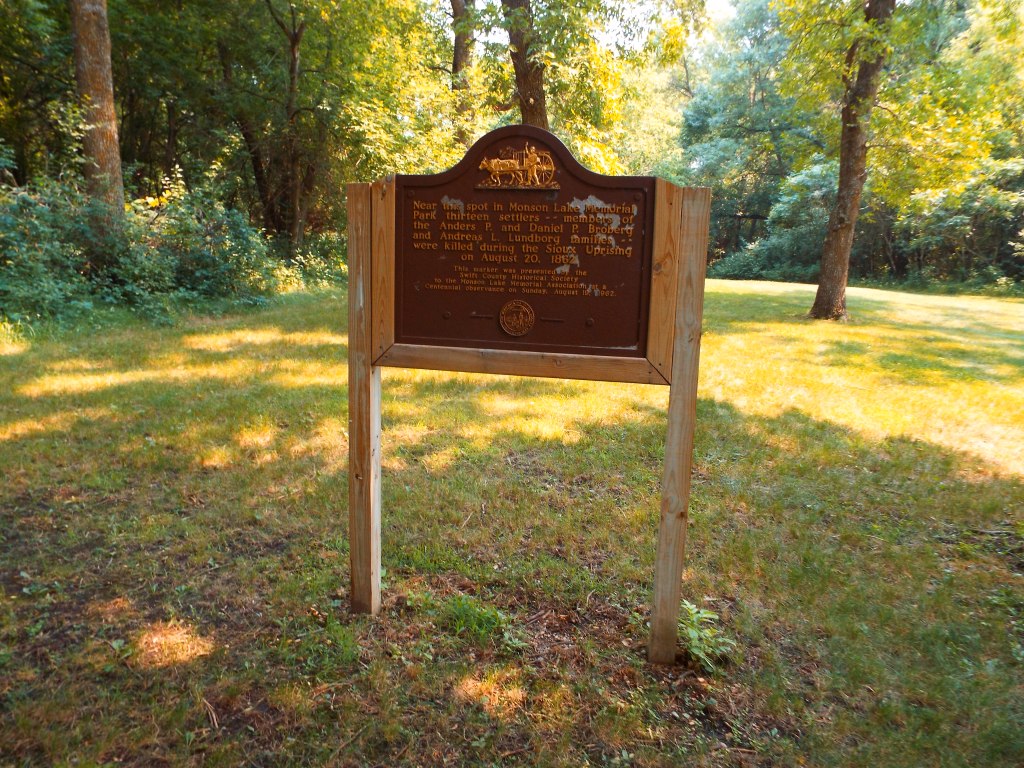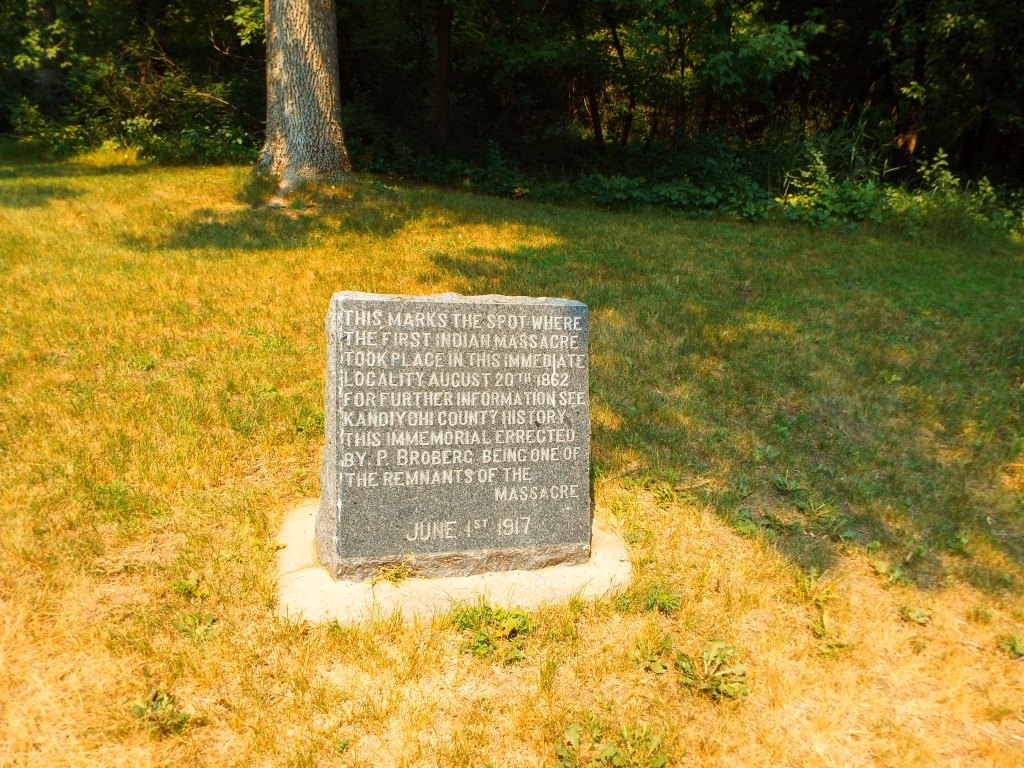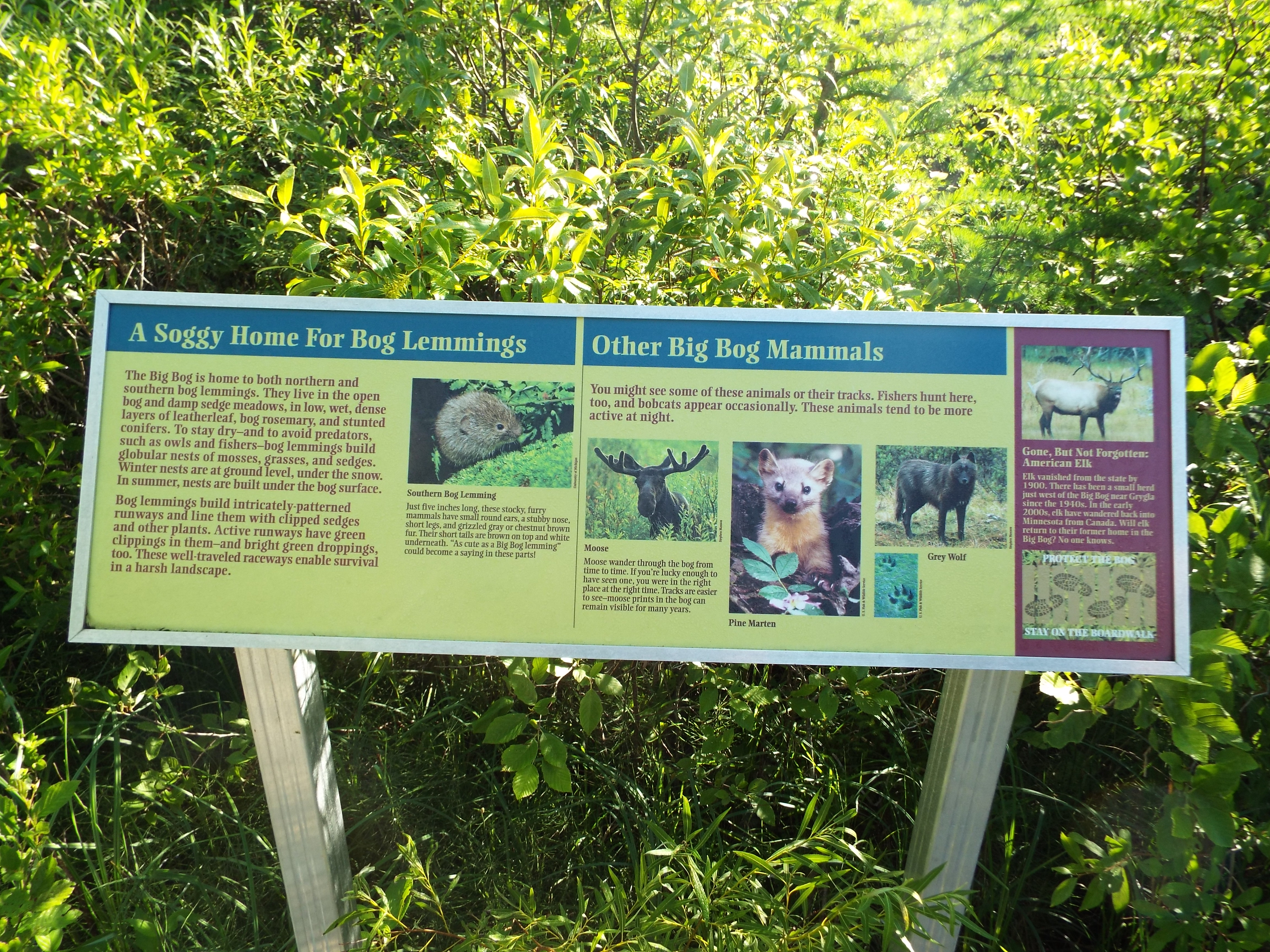
A Review of Three Minnesota State Parks
H. Bradford
7/27/18
This past week I visited three Minnesota State Parks. My goal is to one day visit all 66 state parks. Usually, I try to visit a few new ones each year, so it is a long term goal. The three parks that I visited are each located in central Minnesota and are each within one hour driving distance from St. Cloud. I chose the parks since I visited my brother this past weekend (who lives in the St. Cloud area) and it was a way to kill two birds with one stone. Well, really, I don’t want to kill birds at all. Typically, I prefer to watch them. Violent idioms aside, here is my review of the three state parks that I visited.
Lake Maria State Park:
Lake Maria State Park is located near Monticello, Minnesota, about three hours south-west of Duluth. There was some road construction along the way and when I stopped at a gas station about 10 miles away from the park, the staff and a customer had no idea where Lake Maria State Park was. The customer reckoned that he had heard of it before. This did not bode well for the state park. When I arrived not long after the stop, I found that the park office was closed. It was a Friday, which I assumed might be a busier day of the week for a state park. With the park office closed, I decided to do some hiking, then check back later (since I like to collect state park patches). My first hike was to Little Mary Lake.

(Sorry to disappoint anyone but Lake Maria’s sign is not this sparkly in real life. I just had a sparkle setting on my camera by accident.)
Almost immediately, I was attacked by deer flies. I did not think to wear my hat, so during the course of my hike, I picked dead deer flies from my hair in a demoralizing journey to the lake. Had I counted the number of dead deer flies, I would not be surprised if at least 50 found their death in my hair. The hike itself was hard to enjoy, as my constant battle with the flies made it impossible to stop for photos or bird watching. The trail was dotted with many swampy pools, which seemed like the perfect environment for breeding insects. The forest itself was unique, as it is a remnant of the “Big Woods” that once covered that part of the state. The surrounding area near the park is either farm fields with corn or big box stores along I-94, so the park is a piece of what once was. The forest also seemed unique to me because of the large number of basswood trees. I might have appreciated the park more had my hike not been marked by the incessant attack of deer flies.

One of Lake Maria’s swampy pools.
Little Mary Lake features a wildlife lookout, wherein visitors can take a moment to enjoy the swans and other waterfowl on the lake. Further ahead, there is a boat landing and interpretive trail. I enjoy interpretive trails, though the Zumbrunnen Interpretive Trail was overgrown with sedges and other vegetation. Upon finishing this trail, I headed back to my car to eat a snack, put on a hat (to guard against flies), and wait for the visitor center to open.

The wildlife lookout area
My second hike of the day was to Lake Maria. I took a meandering path instead of a direct route, which took me to a bluebird restoration area, then back to the lake. The lake itself was actually much smaller than Little Lake Mary, despite the fact the larger lake is called “Little.” Once again, I was pestered by flies. Despite wearing hat (which I retrieved after the first hike), they flew at my face and under the brim. This made for an exhausting day, as my hike seemed like an endless battle with flies. However, I think that the park would be more enjoyable in the autumn or spring when the flies are not as thick. Since the park is almost entirely forests and lakes, I am sure that it would be particularly nice in the fall.

Pros:
The park was almost entirely empty. I hiked from 11:30 am to about 3:30 pm and only encountered one other hiker. There were several other people in the park, but I can count on one hand the number that I saw at various points during the day. The park also features backpacking campsites. It seems that it is a great park to visit if someone wants solitude. I assumed that since the park is only 22 miles from St. Cloud and 45 miles from Minneapolis that it would be much busier. This was not the case at all. Lake Maria features lakes, forests, and plenty of birds.
Cons:
The flies were insufferable. The natural ponds and lakes and surrounding farmland seem to be the ingredients for a lot of flies. I would definitely have arrived more prepared for flies had I been thinking about it. They bite any exposed skin, making taking photos difficult as they would land on my hands. Another con was that the park office did not open until 2pm. I wanted to purchase a year long park sticker and an embroidered patch, but had to wait until the park office opened. Stickers can be ordered online, but I wanted the sticker right away as I had planned on visiting two other state parks that weekend.
Charles Lindbergh State Park:
Do you like aviation history and relentless swarms of mosquitoes? I sure don’t. This made Charles Lindbergh State Park a bit of a disappointment for me (heavy emphasis on the mosquito swarms). Charles Lindbergh State Park is located about an hour north west of Lake Maria State Park, or about 30 minutes south of St. Cloud Minnesota. The park was established with donated land from Charles Lindbergh Sr., the father of the famous aviator and a state congressperson. Upon arriving at the park at about 9am on Monday, I found that the office was closed. Bugs and closed park offices were a theme over the weekend. I had intended to camp there, so I dropped off some money for firewood and set off to explore some of the historic buildings around the park.

Because the park was created through a land donation of Charles Lindbergh Sr., visitors can walk around the family farm house. The farm house was not open during my visit, but the grounds were open. Visitors can also view a dilapidated house which was used by tenant farmers on the Lindbergh property. There are some signs which tell the story of the farm, which seems oddly situated in a wooded strip of land between the Mississippi River and Pike Creek. Near the farm, there is a museum dedicated to Charles Lindbergh Jr., the famous aviator. The museum, like the farm house, was not open. In the opposite direction, there is Weyerhauser Museum, but once again, this museum was not open. Although the museums were closed, there are a few interpretive signs and a pleasant trail along the Mississippi River, which connects these sites.

Tenant farmer house
After viewing these historical sites, I decided to do some hiking within the woods. This was where I was bombarded by mosquitoes. It is little wonder, since the trail followed Pine Creek, a wonderful breeding place for the blood thirsty plague. I sprayed myself with DEET, but this would not defeat the relentless mosquitoes, which prodded my skin and clothes for any DEET free areas. On the bright side, it caused me to hike very quickly as the mosquitoes pushed me forward. I hiked a 1.5 mile loop which took me through the forest, along the creek, and to the landing site of Lindbergh’s “Jenny” airplane. I am not really interested in aviation history, but the clearing was the only mosquito free area of the hike.

I would have hiked longer, but the mosquitoes were making me miserable. Instead, I headed to the park office, which was again closed. I decided that I would leave the park, head to Little Falls, find some lunch, then go hiking elsewhere (at Crane Meadows National Wildlife Reserve). This 3.5 mile hike proved to be bug free and greatly improved my bug bitten morale.

A mosquito breeding area
When I returned to the park in the early evening, the park office was still closed. I set up my tent at the campsite, took a short jaunt into the mosquito infested woods, then settled down at my campsite with a fire and some reading. A wasp flew into my tent and I could not find it. This caused me some concern. Another source of concern was the nearby campers, who seemed to be very rowdy and loud. Because of the loud neighbor campers and the mysterious disappearance of the wasp in my tent, I decided to sleep in my car.
Sometime after midnight, a police officer woke me up. He questioned me about the behaviors of the nearby campers and if I had witnessed anything unusual or anyone in distress. There were several squad cars parked near my campsite. I only said that they had been loud earlier, but I didn’t hear any fighting or anything more concerning than the ruckus of loud conversation. The officer left, but sometime later I was roused again, this time by a sergeant who wanted me to make an official witness statement. I really hadn’t been paying attention to the other campers, their conversations, or what they were up to. I have no idea what sort of crime happened on the other campsite. I never heard anyone in need of help or anything that sounded like an argument or fight. So…I don’t know. But, it made me feel uneasy for the rest of the night. The officers also seemed surprised that I was camping alone and in my car, rather than my tent. I explained that a wasp had entered my tent and I could not locate it. The rest of the night was a fitful sleep of wondering if someone had been hurt or if I failed to help someone. I had a dream that a woman came knocking on my car door asking for help. In the morning, the park office was still closed as I left…

My shirt says…camping is in-tents. Owing to a wayward wasp and concerning crime, it was a little too intense, even if it was not in-tent.
Pros:
Charles Lindbergh State Park features museums and historical buildings, melding history and nature into a unique state park. The park is located along the Mississippi River, so it is also a good place to visit if a person wants to take in a section of the second longest U.S. river. However, most of the trails are not along the Mississippi. The park is conveniently located near Little Falls, MN which has a historic downtown and several local attractions, including the Minnesota Fishing Museum (inconveniently closed on Mondays as well). The town has a variety of restaurants and stores, making it easy to restock or recharge while camping. The park is also less than 10 miles from Crane Meadows National Wildlife Preserve. Location and history seem to be the best features of the park. Like Lake Maria, the park was fairly empty. While the campground was active, I didn’t see any other hikers on the trails.
Cons:
The park was not staffed between 9 am Monday and 9am Tuesday when I left. I checked the office numerous times, but I saw no one there. This meant that I could not collect an embroidered patch from the park. It also meant that no one was around to attend to the campground, which in the case of my stay, was the site of some kind of crime. Obviously, visiting the park on a Monday was not a perfect idea, since the museums were closed. There were also a lot of hungry mosquitoes.
Crow Wing State Park:
The final park that I visited was Crow Wing State Park, which is less than 30 minutes north of Little Falls near Brainerd, Minnesota. Of the three, I spent the least amount of time here, since I was simply stopping by on my way home. Crow Wing State Park is the park that I would most likely revisit and was my favorite of the three. I spent under three hours at the park, hiking around on Tuesday morning after leaving Lindbergh State Park. Once again, the park office was closed. It was closed throughout my visit (though I saw staff poking around the park- just not attending to the office). Thus, I was unable to obtain a collectable embroidered patch once again…since….once again, the park office was closed.

Much like Charles Lindbergh State Park, Crow Wing State Park was a breeding ground for aggressive swarms of mosquitoes. The mosquitoes were actually far worse in some areas of this park. Once again, DEET didn’t do much to deter the menacing cloud that followed me around the park. My 100% DEET spray, which is potent enough to remove my nail polish and destroyed the fabric of my leggings, didn’t bother them that much. The mosquitoes mostly bounced off my skin, looking for a clear spot to feast. I can only be thankful that the mosquitoes here do not carry tropical diseases as we would all be doomed. At some points, I actually jogged down the trail, hoping to out run them. I didn’t. There were just too many. Oh well.

More mosquitoes…
Insects aside, there was a lot to like about the park. For one, the trails were accessible and could easily be visited by families. The trail that I visited passed through the remnants of the former town of Crow Wing, which was established at the confluence of the Mississippi and Crow Wing rivers. There is nothing left of the town but sign posts where businesses and town amenities once stood. However, this was interesting and there were a few interpretive signs which told the story of the long lost 1800s trading town. Another bonus of this area was that it was situated in a sunny clearing that was devoid of mosquitoes. Because of this, I took my time, taking in the signs and the history. Highlights of the remnants of Crow Wing include a reconstructed wooden boardwalk and the restored home of Clement Beaulieu the head of the American Fur Company trading post in Crow Wing. It is one of the oldest wooden houses in Minnesota. The town of Crow Wing had a population of 600 people at its peak, most of whom were of Native American descent. The interpretive signs did not mention (at least the ones that I read) that the town collapsed because of the relocation of local Native Americans to White Earth Reservation in 1868 and the subsequent railroad construction in Brainerd.

Aside from the town of Crow Wing, visitors can hike along the Red River Oxcart Trail to where oxcarts forded across the Mississippi River. The Red River Trail was established as a trade route to Winnipeg, Manitoba. The section near Crow Wing was constructed through Ojibwe territory, as it was viewed safer at the time than passing through Dakota territory. In addition to this trail (which was very buggy) visitors can also view a battle site where Ojibwe and Dakota people fought in 1768. There is also a reconstructed chapel of Father Pierz, who built a mission near Crow Wing and promoted white settlement and the acculturation of Native Americans (through conversion to Catholicism and adopting European farming practices). I did not visit the chapel as I was not as interested in Catholic history and the mosquitoes were too intense.

Pros:
This state park was my favorite of the three. There is a lot to like! Native American history, a ghost town, ox cart trail, and battle site (though there was not a lot of information about the 1768 battle). It also seemed to be the most accessible of the three parks, as the trails were flatter and the distance to the ghost town was not far. With that said, those with walkers or wheelchairs would still find it difficult to navigate. However, families or those with less restrictive mobility issues might be able to enjoy the ghost town. The reconstructed boardwalk is rustic looking, but this also makes it uneven. That could be a challenge. As a whole, state park hiking trails do not seem that accessible, but this one might be slightly less daunting. The history is the main attraction of this park. The nature is also nice as well. Although it is only 30 minutes north of Little Falls, the landscape features conifers, wetlands, and wet prairie. It is also a location to enjoy the Mississippi River (as it meets the Crow Wing river).
Cons:
There really weren’t any cons to this park, other than the mosquitoes. I suppose that a con could be that the ghost town of Crow Wing seems to be excellent habitat for snakes- as I saw at least three by the boardwalk. I am not bothered by snakes, but this might frighten some people. Interestingly, I also saw a small lizard. There are only three lizards that are found in Minnesota. I have never seen one. I believe that the one that I saw was a prairie skink, as that is the most common and is found in that part of the state. Again, this should go in the pros, as who isn’t pro skink? So scratch that, there is nothing wrong with this park except for the millions of mosquitoes and fact that the office was closed AGAIN! I missed out on another collectable patch.
Conclusion:
If there are two lessons to draw from these state park visits it is 1.) be prepared for bugs. 2.) state parks need more funding and staffing. To address the first issue, yes, I have complained a LOT about insects. I could certainly dress differently or prepare myself in other ways for the massive amount of insects. Another idea is to visit these parks in times of the year where the insects are less active. Daily weather variations can also make a difference. Had there been heavy wind or rain, the insects would not have been as active. I think that next year, if I visit any state parks in the month of July I will choose places that are not as wet, as each of these parks is either located on rivers or lakes. Southern or Western Minnesota might be better options for July. To address the staffing issue, I was shocked that the parks seemed like ghost towns…(aside from the actual ghost town of Crow Wing). The parks seemed very understaffed. What has happened? We really need to do more to staff the parks! Of course, there were few visitors at the parks as well. These parks may not be as well-visited as other parks in Minnesota. Nevertheless, it is summer, so I expect that there would be SOME tourism to these parks. I guess we really need to promote state park visits and funding for staff. Otherwise, hopefully this inspires someone to visit a state park this summer and now you know what to expect!

Posted in
history,
nature,
outdoors,
state park,
travel and tagged
Brainerd area,
camping,
central Minnesota,
Charles Lindbergh State Park,
Crow Wing,
Crow Wing State Park,
H. Bradford,
Heather Bradford,
Lake Maria,
Lake Maria State Park,
Lindbergh,
Minnesota State Parks,
Minnesota State Travel,
Mississippi River,
outdoors,
St. Cloud area,
state park,
State Park Travel




















































